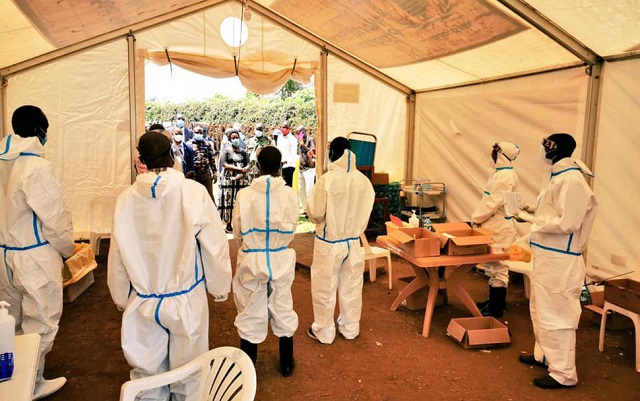
The virus has since moved from high density urban areas to the congested slums
Kampala, Uganda | RONALD MUSOKE | Aug. 14 marked six months since COVID-19 was first detected on the continent. While the virus has accelerated in many other regions of the world, the pandemic’s evolution on the African continent has been different according to the World Health Organization (WHO).
The WHO regional office for Africa said in a report released Aug.13 that preliminary analysis by the UN health agency has found that “an exponential surge in cases which peak about two to three weeks later is not occurring in Africa.”
Instead, several countries on the continent are experiencing a gradual rise in COVID-19 cases and it is difficult to determine a specific peak. Meanwhile, transmission patterns do not only differ between countries but there are also variations within the countries’ borders.
At the beginning of the pandemic, COVID-19 mainly affected capital cities. The virus has since moved from high density urban areas to the congested slums which are a key feature in most African cities. The virus is said to be moving towards rural areas that have a lower population density.
“In Africa, curbing COVID-19 is a marathon and not a sprint,” said Dr Matshidiso Moeti, the WHO regional director for Africa, “We are observing multiple local outbreaks each with their own infection patterns and peaks.”
On July 8, Africa’s COVID-19 cases surpassed 500,000 with 11, 959 deaths. Slightly over a month later, the continent has registered 1,084,687 cases with 24,660 deaths and 780,076 recoveries according to the Africa Centres for Disease Control and Prevention dashboard results seen by The Independent on Aug.14.
Speaking from Brazzaville, Dr. Moeti said, Africa will only “win the race” if the governments boost responses at the community level. She said the COVID-19 response must be integrated into the fabric of every district.
According to the World Health Organisation, in the past six months, African countries have made a lot of progress in the fight against the pandemic. Many countries were, for instance, quick to impose lockdowns and key public health measures that helped to slow down the virus.
Over time, preventive, diagnostic and treatment measures have been strengthened. All countries can now diagnose COVID-19, with 14 performing over 100 tests per 10,000 population. Production of oxygen, which is critical for severely ill COVID-19 patients, has also considerably increased, with the number of oxygen plants in the region rising to 119 from 68 at the onset, while the number of oxygen concentrators has more than doubled to over 6000.
A recent WHO assessment based on self-reporting by 16 countries in sub-Saharan Africa found that the countries improved their capacity to respond to COVID-19. WHO measured the countries’ readiness in a range of areas including coordination, surveillance, laboratory capacity, case management, infection prevention and control. Six months ago, the score was 62% and now it is 78%.
But, while much progress appears to have been made at the national level, at the district level, countries are generally lagging behind. The scores for coordination (38%), infection prevention and control (46%) and clinical care for patients (47%) are all particularly low at the district level.
WHO regional officials say while progress has been made, it is important that governments step up readiness and response measures, particularly at the sub-national levels. With the loosening of movement restrictions, there are risks that the virus may spread even further into remote areas of the continent.
“Not only must we keep up with the evolving trends, we must also anticipate, predict and act faster to head off potentially disastrous outcomes,” said Dr Moeti, “Areas of high transmission as well as localities with relatively fewer infections both deserve attention. In short we must be strong on all fronts.”
WHO said it is now working with partners to provide technical support, training and essential medical supplies including the delivery of more than 2.1 million testing kits and the training of around 100,000 health workers.
WHO is also supporting countries witnessing a large number of COVID-19 infections. On Aug.5, the first group of a “surge team” arrived in South Africa. WHO is also increasing support to other countries that have requested urgent assistance by mobilizing more technical experts on the ground and by scaling up training to build local capacity, particularly at the provincial and district level.
****
 The Independent Uganda: You get the Truth we Pay the Price
The Independent Uganda: You get the Truth we Pay the Price



